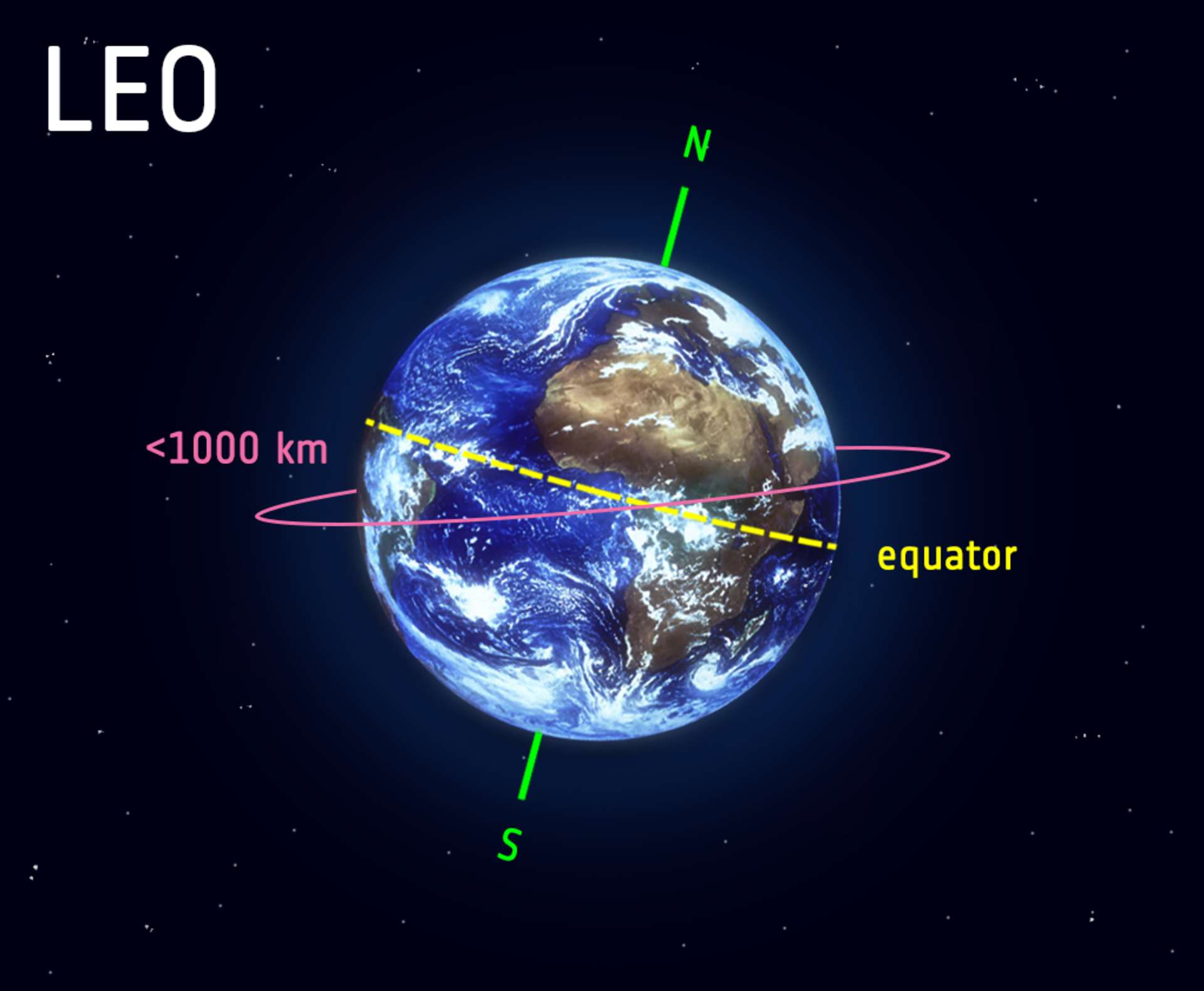LOW EARTH ORBIT (LEO)

Low Earth Orbit (LEO) is an orbit around Earth with an altitude of 2,000 kilometers (1,200 miles) or less. It is the most common type of orbit for artificial satellites, and it is used for a variety of purposes, including:
- Earth observation: LEO satellites can provide high-resolution images of the Earth's surface, which can be used for a variety of purposes, such as monitoring environmental change, tracking weather patterns, and providing military intelligence.
- Communication: LEO satellites can be used to relay communications signals between different parts of the Earth. This is especially useful in remote areas that are not served by terrestrial communications infrastructure.
- Navigation: LEO satellites are used by the Global Positioning System (GPS) to provide accurate positioning information to users on the ground.
- Scientific research: LEO satellites can be used to conduct a variety of scientific experiments, such as studying the Earth's atmosphere, the Sun, and the stars.
- Shorter orbital periods: Satellites in LEO have shorter orbital periods than satellites in higher orbits. This means that they can transmit data to Earth more quickly.
- Lower communication latency: The lower orbital period of LEO satellites also means that there is lower communication latency, which is the time it takes for a signal to travel from the satellite to Earth.
- Closer to Earth: LEO satellites are closer to Earth than satellites in higher orbits. This means that they can be serviced more easily, and they are less likely to be affected by space debris.
DS-SAR stands for Dual-Speed Synthetic Aperture Radar. It is a Singaporean SAR Earth Observation satellite that was launched into orbit on July 30, 2023.
The satellite was developed and built by Israel Aerospace Industries (IAI) for the Defence Science and Technology Agency (DSTA) of Singapore.
DS-SAR is a dual-frequency SAR satellite, meaning that it can operate at two different radar frequencies: C-band and L-band.
This allows the satellite to produce images with different characteristics, depending on the frequency used. For example, C-band images are typically better at resolving fine details, while L-band images are better at penetrating clouds and other obscurants.
6.Polar Satellite Launch Vehicle (PSLV)
The Polar Satellite Launch Vehicle (PSLV) is an expendable launch vehicle developed and operated by the Indian Space Research Organisation (ISRO).
It is a three-stage, solid-and-liquid-fueled rocket that is capable of launching satellites into Low Earth Orbit (LEO), Sun-synchronous orbits, and Geosynchronous Transfer Orbit (GTO)
The PSLV has been used to launch a wide variety of satellites, including Earth observation satellites, communication satellites, and scientific satellites.
It has also been used to launch commercial satellites for customers around the world
7.Geosynchronous Satellite Launch Vehicle (GSLV)
The GSLV is an expendable launch vehicle developed and operated by the Indian Space Research Organisation (ISRO).
It is a three-stage, liquid-fueled rocket that is capable of launching satellites into geosynchronous transfer orbit (GTO)
The GSLV was first launched in 2001, and has since been used to launch a variety of satellites, including communication satellites, weather satellites, and scientific satellites
|
For Prelims: Low Earth Orbit (LEO), PSLV, GSLV
For Mains: 1.Discuss the significance of the Polar Satellite Launch Vehicle (PSLV) in India's space program. Highlight its features and capabilities that have made it a reliable and preferred launch vehicle for both domestic and international satellite missions
2.GSLV (Geosynchronous Satellite Launch Vehicle) is a crucial component of India's space endeavors. Elaborate on its design, stages, and payload capacity. Compare and contrast GSLV with PSLV in terms of their applications and advantages
|
|
Previous Year Questions
1.A low earth orbit satellite can provide large signal strength at an earth station because: (ESE Electronics 2011)
A. Path loss is low
B. These orbits are immune to noise
C. Large solar power can be generated at these orbits
D. Lower microwave frequencies in s-band can be used
Answer-A
|




